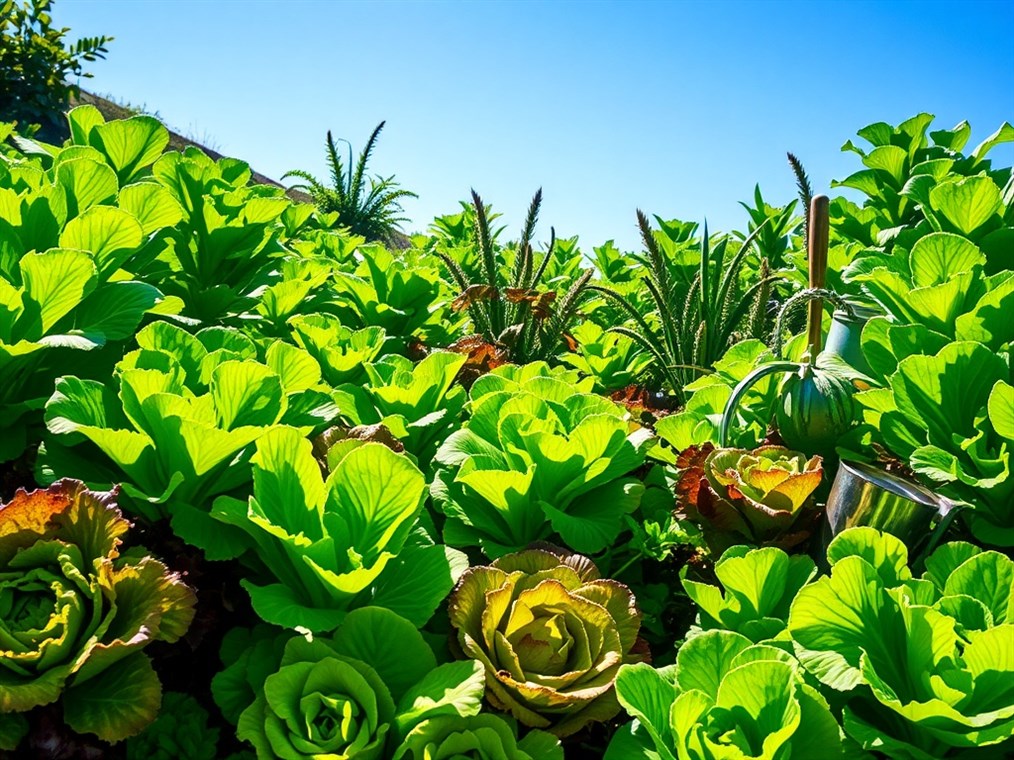Lettuce Love: How to Grow Your Own Salad Garden
Lettuce! It’s the backbone of so many great meals, and honestly, there’s nothing quite like the taste of fresh, homegrown greens. Forget the limp, bagged stuff from the store – with a little know-how, you can have a constant supply of crisp, delicious lettuce right outside your door. Seriously, it’s easier than you think. Let’s dive into how you can become a lettuce-growing guru.
First things first: lettuce isn’t just “lettuce.” There’s a whole world of leafy goodness out there! You’ve got your classic crisphead, like the iceberg you see in every supermarket – these guys need cooler weather and a longer growing season, so keep that in mind. Then there’s butterhead, all soft and delicate, like Boston or Bibb. Romaine, of course, is the king of Caesar salads, standing tall and proud. But honestly, for ease and continuous harvests, I’m a sucker for loose-leaf varieties. Red Leaf, Green Leaf, Oak Leaf… they’re all fantastic, and you can just snip off what you need as you go.
Timing is everything when it comes to lettuce. This is a cool-season crop, plain and simple. Think spring and fall.
For a spring harvest, you’ve got a couple of options. You can get a head start by sowing seeds indoors about 6-8 weeks before the last frost. Or, if you’re feeling lucky (and the weather cooperates), direct-seed outdoors 2-4 weeks before the last frost. If you started indoors, wait until about 3-4 weeks before that last frost to put those little transplants in the ground. For a fall crop, aim to direct-seed about 6-8 weeks before the first frost. Honestly, fall-grown lettuce can be surprisingly sweet – those cool nights really do something magical! Want lettuce all season long? Try succession planting. Just sow a few seeds every couple of weeks, and you’ll have a steady supply.
If you’re starting seeds indoors, sprinkle them thinly in small pots or trays filled with seed compost. Keep them somewhere warm and bright. Outdoors, prep the soil by removing any weeds and raking it until it’s nice and crumbly. Don’t bury the seeds too deep – they need light to sprout, so just a light covering of about 1/8 to 1/4 inch is perfect.
Before you transplant those seedlings, give them a little toughening-up period. This is called “hardening off.” Basically, you gradually expose them to the elements over a few days. When you’re ready to plant, space them according to the variety – anywhere from 6 to 18 inches apart. If you’re planning on harvesting leaves continuously, closer spacing is fine.
Now, let’s talk real estate. Lettuce loves sunshine – about 5-6 hours a day is ideal. But if you live in a warmer climate, a little afternoon shade can be a lifesaver. As for soil, think fertile, well-draining, and consistently moist. Before planting, mix in plenty of compost. Lettuce likes a pH between 6.0 and 7.0. If you’re growing in containers, make sure they’re at least 6 inches deep and have drainage holes. Use a good mix of organic potting soil and compost.
Watering is key, especially when those plants are young. Keep the soil consistently moist, and water regularly when it’s hot and dry. Aim for about 1-2 inches of water a week. Water in the morning to avoid problems with pests and diseases. A good layer of mulch, like garden compost, will help keep the soil moist, suppress weeds, and keep the soil temperature down. And speaking of weeds, pull them carefully by hand to avoid disturbing those delicate lettuce roots.
Lettuce isn’t a heavy feeder, but a little boost can help. Start fertilizing about a month after planting with a water-soluble fertilizer.
Okay, let’s be real: pests and diseases happen. Aphids are a common nuisance. Try planting chives or garlic between your lettuce rows to deter them, or use insecticidal soap. Ladybugs are your friends here! Slugs and snails can also be a problem. Protect seedlings with cloches or fleece, and consider using traps or baits. Cutworms can be devastating, as they chew through stems at night. Handpick them or use Bacillus thuringiensis (Bt). Downy mildew is a fungal disease that can pop up. Make sure your plants have good air circulation and avoid watering from above. Lastly, bolting – when lettuce prematurely flowers – can make the leaves bitter. Choose bolt-resistant varieties and provide shade during hot weather to prevent this.
Harvest time! For loose-leaf lettuce, just snip off the outer leaves as you need them. This “cut-and-come-again” method will keep you in lettuce for weeks. For butterhead and romaine, harvest the whole head when it’s reached full size and feels nearly firm. Crisphead is ready when the head is firm and tightly packed.
A few tips for the best flavor: harvest in the morning when the leaves are crispest. Lettuce tastes best when it’s cool. And definitely avoid harvesting bolted lettuce – it’ll be bitter.
Want to keep the lettuce party going? Use cold frames or row covers to protect your plants from frost and extend the season. Shade cloth can help prevent bolting during the summer heat. And some varieties can even survive the winter with a little protection!
So, there you have it. Growing your own lettuce is easy, rewarding, and delicious. Get out there, get your hands dirty, and enjoy the fruits (or rather, the leaves) of your labor!

